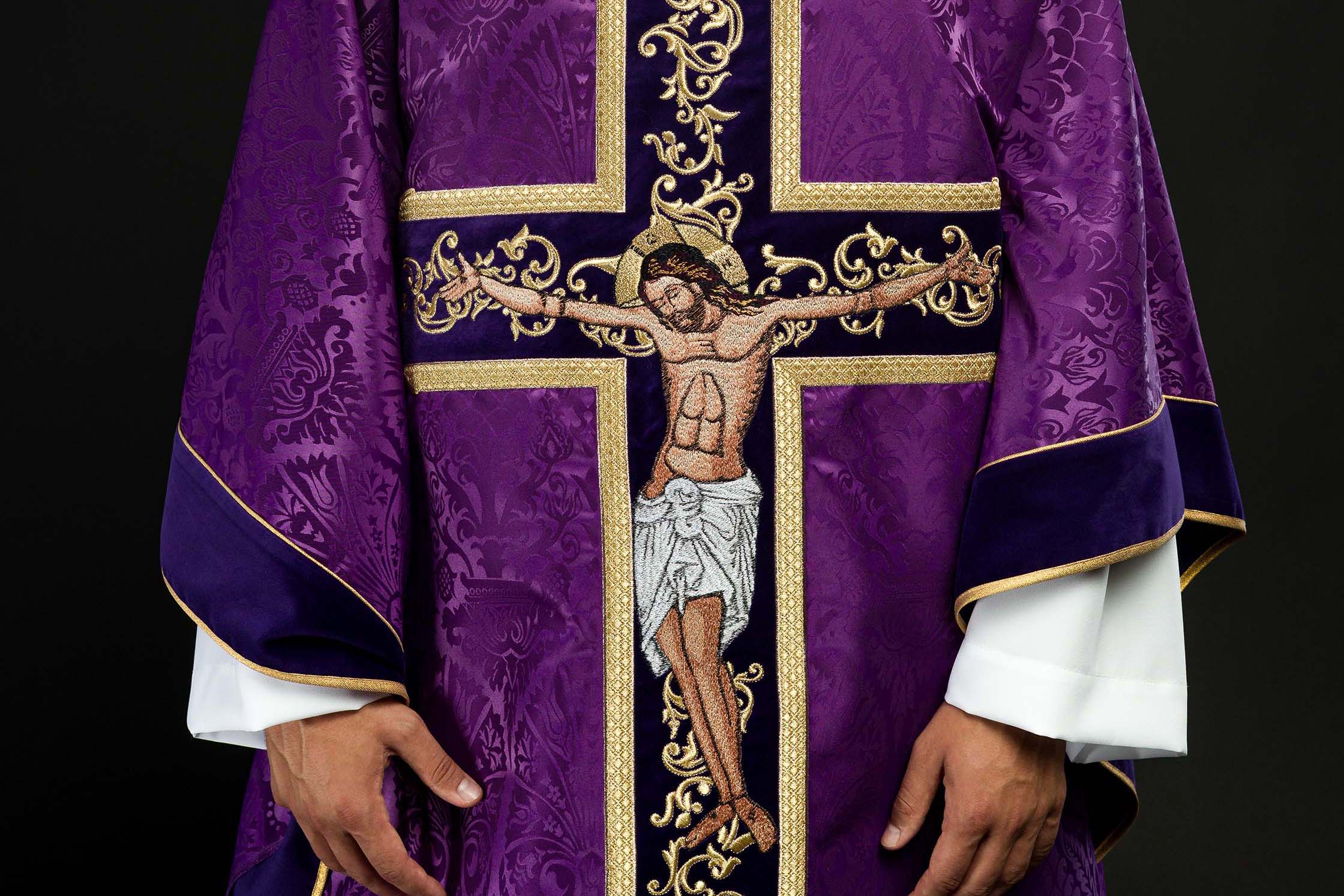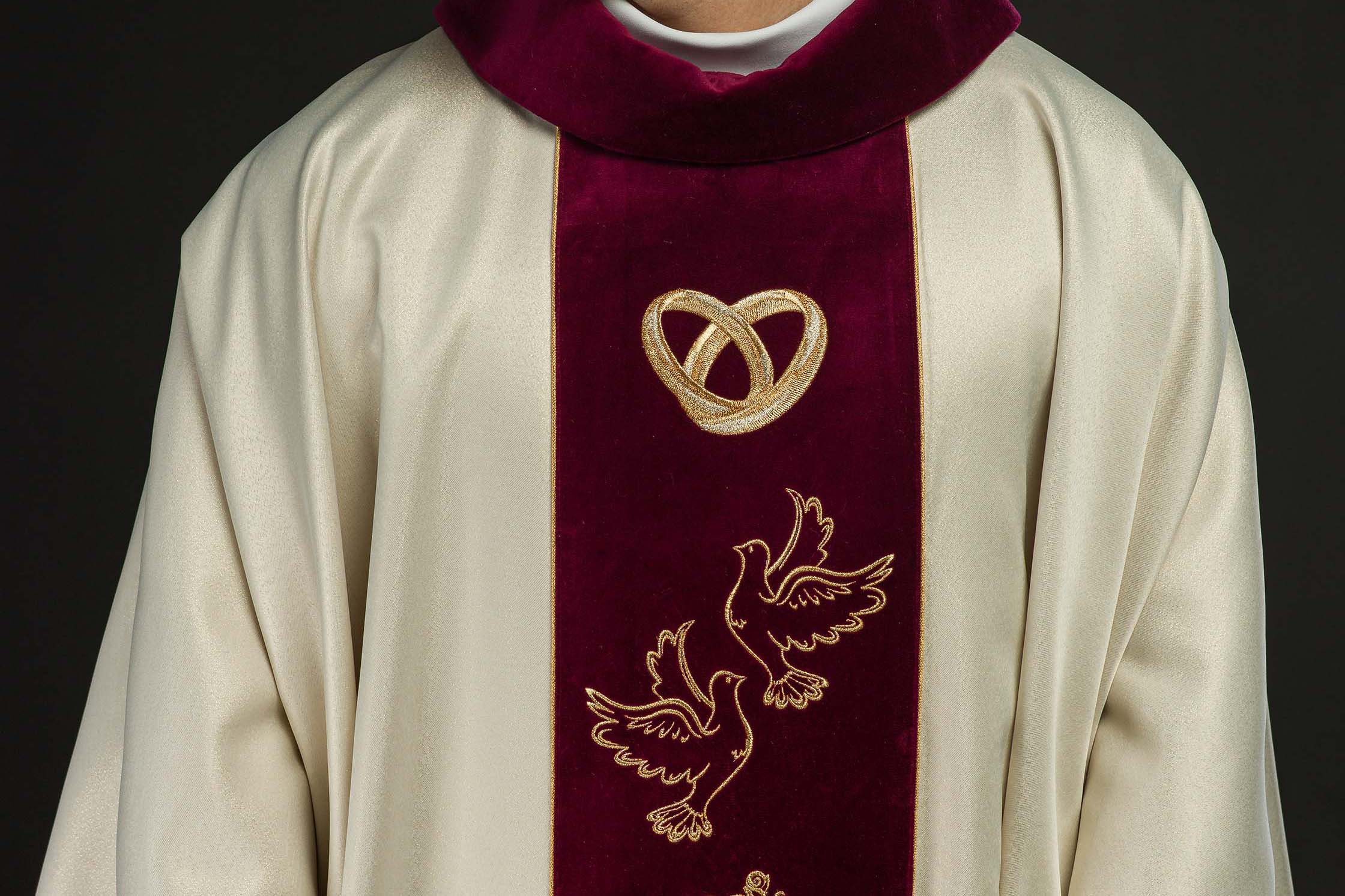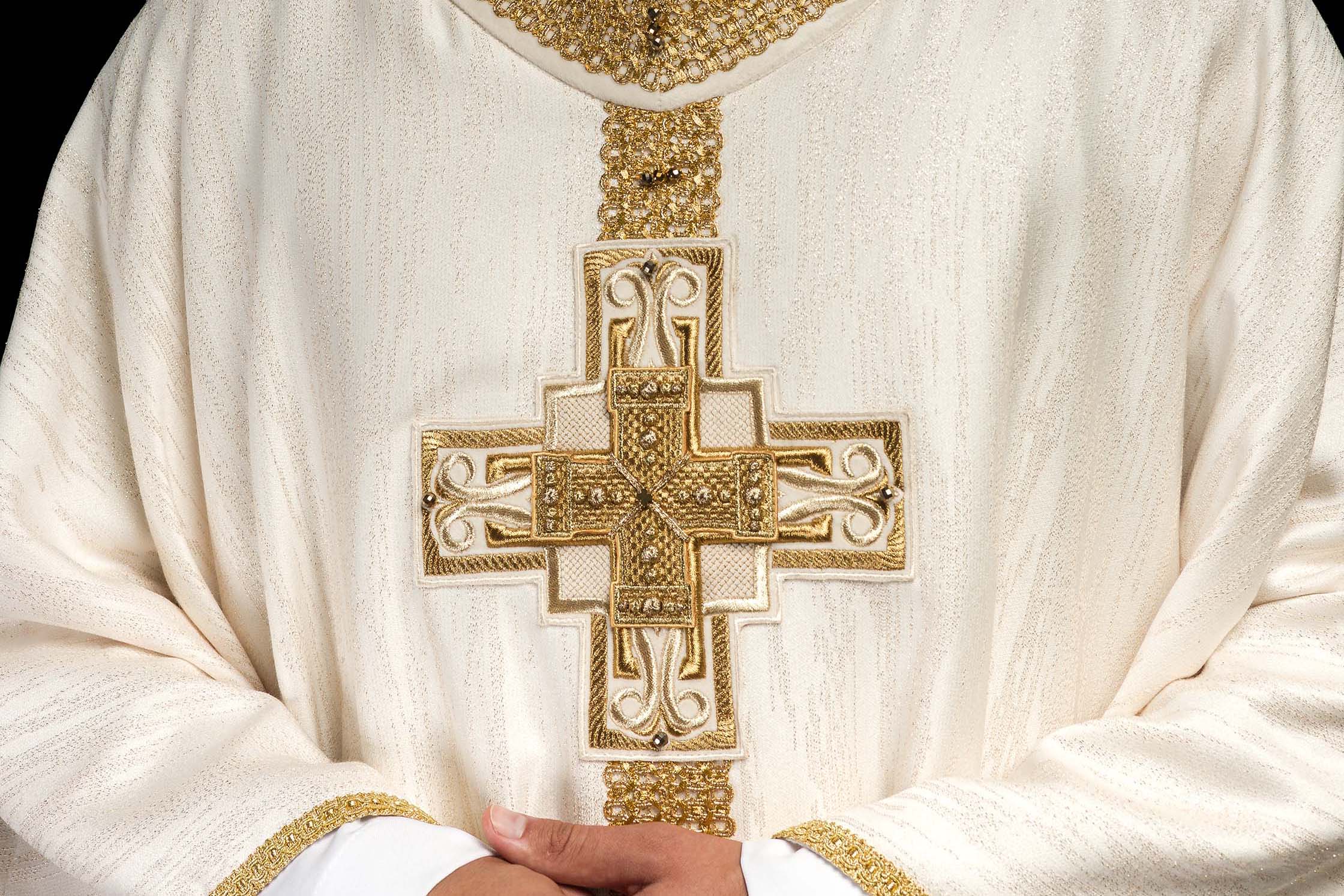
Liturgical Vestment Set: What Should Be Included in a Parish's Supplies? (Consider exploring options at haftinausa.com)
Complete Set of Liturgical Vestments – What Should Be Included in Parish Equipment?
Needs Analysis and Basic Equipment Elements
The parish, as the heart of the community of believers, plays a crucial role in religious life. Proper liturgical vestments and accessories are essential for the correct performance of rites, emphasizing the sanctity and solemn nature of gatherings. Equipping the parish with liturgical vestments is an investment in the spiritual development of the community and the ability to celebrate the liturgy in accordance with tradition and Church regulations. A properly assembled set allows for the handling of all pastoral needs, from daily Masses to special occasions such as holidays, jubilees, or family celebrations.
Why Is a Complete Set of Liturgical Vestments Important for a Parish?
Liturgical vestments are not just clothing, but primarily symbols. Each element has its own meaning and reflects the specificity of a given celebration. A well-equipped parish is able to provide the appropriate setting for each celebration, which translates into deeper spiritual experiences for the faithful. Complete sets of vestments, including chasubles in appropriate liturgical colors, stoles, albs, surplices, dalmatics, or copes, allow for the full participation of clergy in celebrations and the manifestation of unity with the Church. Additionally, high-quality vestments and accessories, such as chalice linens, veils, or altar cloths, demonstrate respect for holiness and liturgical aesthetics.
Basic Liturgical Vestments for Every Parish
When preparing the equipment for a parish, it is worth starting with the absolute basics that will allow for the performance of most rites. Key here are, of course, vestments for priests and deacons:
1. Chasubles – The Heart of the Mass Liturgy
The chasuble is the most important vestment of the priest, worn over the alb and stole. Each parish should have at least one set of chasubles in the basic liturgical colors:
- White/Gold Chasuble: Used during joyful periods, such as Christmas and Easter, as well as on feasts in honor of Jesus Christ, the Mother of God, saints who are not martyrs, and during the Easter Season. It's good to have several white chasubles with different embroidery motifs, such as IHS, Easter Lamb, the Sacred Heart of Jesus, or Marian motifs.
- Green Chasuble: Used during Ordinary Time, which is most of the year. It should be available in several variations to ensure variety.
- Red Chasuble: Used on the days of the Lord's Passion (Good Friday), on the feasts of the apostles and martyrs, and also during the Easter Season if a martyr's commemoration falls on them.
- Violet Chasuble: Key for periods of penance and conversion – Advent and Lent.
- Pink Chasuble: Used less frequently, on the third Sunday of Advent (Gaudete) and the fourth Sunday of Lent (Laetare), as a sign of hope and joy during these periods.
- Black Chasuble: Historically used at Masses for the dead, now often replaced by a violet chasuble. However, it is worth having it in stock due to tradition.
It is also worth considering having thematic or special chasubles, e.g., with jubilee embroidery, or those adorned with stones, for special occasions.
2. Stoles – A Sign of Priestly and Diaconal Ministry
The stole is an indispensable attribute of the priest and deacon. The priest places it around his neck, and the deacon drapes it over his left shoulder, pinning it on the right side. Each parish should have at least two sets of stoles for priests (one in basic liturgical colors: white, green, red, violet) and several stoles for deacons. It is also a good idea to have wedding stoles, often in white or gold, and stoles with various embroidery motifs that can be used interchangeably, depending on preferences and occasion.
3. Albs – The Basis of Liturgical Vestments
The alb is a long, white vestment symbolizing purity and resurrection. It is a common vestment for all serving at the altar – priests, deacons, and acolytes. Each parish should have an appropriate number of albs for all serving. It is worth investing in albs of different lengths to adapt them to the height of the people wearing them. Different cuts, e.g., with a turtleneck or with a zipper in the front, can increase comfort of use.
4. Surplices – For Altar Servers and Lectors
Surplices are shorter, white outer vestments, worn by altar servers, lectors, and cantors over black robes. Depending on the number of liturgical service members, the parish should stock up on several or a dozen surplices. It is important that they have different sizes, taking into account the age and height of the altar servers.
5. Dalmatics – For Deacons
The dalmatic is a festive liturgical vestment of the deacon, similar to a chasuble, but often shorter and with sleeves. It should be available at least in white, green, and red to be able to serve during solemn celebrations.
6. Copes – For Processions and Blessings
The cope is a solemn outer vestment, used by priests and bishops during processions, blessings with the Blessed Sacrament, administering the sacrament of confirmation, or other celebrations when a chasuble is not required. It is worth having a cope in white/gold, as well as in other basic liturgical colors, e.g., violet or green.
Chalice Linens – Essential Accessories
Chalice linens are a group of smaller liturgical textiles, necessary for the preparation and celebration of Holy Communion. Complete chalice linens should include:
- Purificator: A small, white towel for wiping the chalice and mouth after administering Holy Communion. It's good to have several pieces so you can always use a clean one.
- Corporal: A square, white piece of material on which the chalice and paten are placed during Mass. It must be properly stiffened and folded into an accordion.
- Palla: A stiff, square or rectangular cover for the chalice, protecting it from contamination.
- Chalice Veil: A covering for the chalice, often decorated with embroidery, symbolizing the mystery of the Eucharist.
- Burse for the Corporal: A special bag used to store the corporal.
It is worth ensuring that the chalice linen is made of natural materials, such as linen or cotton, and decorated with subtle embroidery, e.g., with the motif of IHS, a chalice with a wheat ear, or the Easter Lamb.
Altar Cloths and Coverings
The central point of the church is the altar, which must be properly covered. Necessary are:
- Altar Cloth: It must be made of white material and reach the ground on each side of the altar. It is important that it has a special frontal embroidery that is visible from the side of the faithful (e.g., with the monogram IHS, Chalice and Wheat Ear, the Sacred Heart of Jesus). It is worth having several altar cloths for various occasions or for frequent exchange.
- Coverings for the Ambo and Lectorium: Napkins or small cloths that can be used to decorate the ambo, lectorium, or paschal candle, adding charm to these important places.
Liturgical Accessories – Completing the Equipment
In addition to vestments and chalice linens, the parish should also have basic accessories:
- Chalice and Paten: The most important vessels for celebrating the Eucharist. It is worth having at least two sets, made of appropriate materials (e.g., silver-plated, gold-plated).
- Thurible and Boat for Incense: For incensing during the liturgy.
- Aspergillum: For sprinkling the faithful with holy water.
- Candlesticks: For candles – for the altar, paschal candle, processional.
- Incense and Coals: Necessary for the thurible.
- Bells: Used during the elevation.
- Purificator Hangers (Vasculum): For storing the purificator.
Having these elements ensures the smooth running of rites and the possibility of their full celebration.
Personalization and Quality – Investment for Years
When choosing vestments and liturgical accessories for the parish, it is worth focusing on quality and durability. The Polish company HAFTINA TEXTILE GROUP SP. Z O. O. offers a wide selection of high-quality chasubles, stoles, albs, chalice linens, and accessories, made of the best materials and adorned with intricate embroidery, often with the possibility of personalization. Investing in good quality equipment guarantees that the vestments will serve for many years, preserving their beautiful appearance and symbolic meaning.
Summary
Complete equipment of the parish with liturgical vestments and accessories is the foundation for the worthy celebration of Mass and other services. Properly selected chasubles in various colors, stoles, albs, surplices, chalice linens, altar cloths, and necessary accessories, such as chalices or thuribles, allow for the full and solemn celebration of the liturgy. Remembering the quality of workmanship and compliance with liturgical regulations, the parish can create a space that promotes a deep experience of faith by all participants.
```




